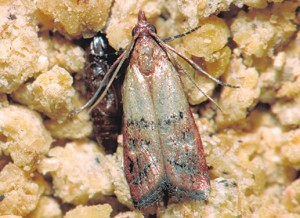You inspected a customer’s house and found infested food in the pantry. Being a competent professional, you inspected and discarded infested items, and made treatments where appropriate. Surprisingly, a week later, you receive a call saying the pests are back in the house. If you have a persistent, unidentified infestation, consider some of the following atypical food sources that can sustain stored product pests:
⦁ Stuffed animals can be filled with grains (whole or damaged) that can become infested. When the adults develop, they’ll emerge from the toy and can then be spotted by the homeowner or show up in your monitoring devices.
⦁ Handcrafted items such as doorstops, table arrangements and wall hangings can contain grains, seeds, beans and corn kernels. These items might be placed in and around the kitchen and pantry, making it difficult to identify them as the culprits.
⦁ Rodent baits formulated with meal and/or seeds are attractive to some insect pests. When inspecting bait stations, look for minute signs of damage. If the homeowners have purchased their own rodenticide bait, ask them where the bait was placed. Check these areas for damage and potential scattering of bait.
⦁ Vending machines can be responsible for sustaining a stored product pest infestation. Some unpopular food items might sit for long periods of time without being apparent to anyone other than the person responsible for stocking the machine.
You can reach Dr. Bennett Jordan, entomologist and staff scientist for the National Pest Management Association (NPMA), at bjordan@pestworld.org.

Leave A Comment